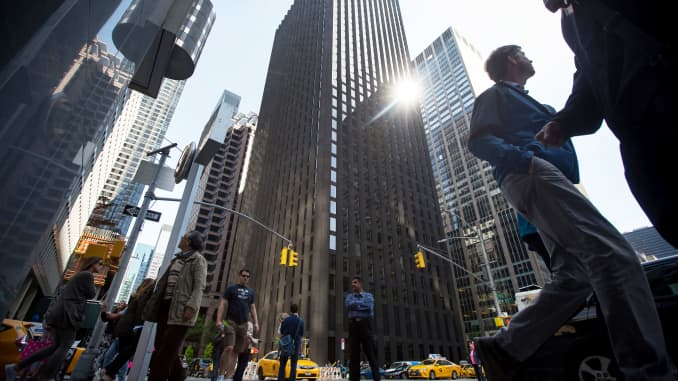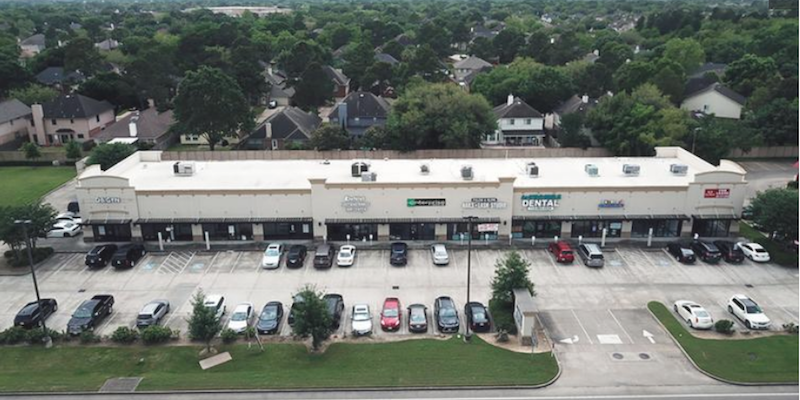Commercial Real Estate
By definition, commercial real estate pertains to various types of properties which are not used for residential purposes – this includes retail properties, office buildings, apartments, or even vacant land that can be developed for commercial purposes. Houston has several commercial real estate brokers, and CXRE Commercial Real Estate is one of the companies offering management and leasing services specifically for business properties. Even with top agencies such as CXRE, it is unfortunate that the commercial real estate industry still does not seem to witness its full potential. Hence, the commercial real estate industry in Houston aims to reinvent how they do business by enticing millennials who have the courage in starting up their own companies with a tenant-centric mindset.
Millennials and Start-up Companies
There are differences, but not opposing views, over the span of years that millennials are born. Nonetheless, millennials make up a quarter of the world’s population, making them a significant consumer group. They are also most passionate in what they believe in that the rise of social enterprises came hand in hand with the millennial generation. Alongside with the rise of social enterprises is the boom of start-up companies, powered by no one else but millennials themselves. These are the reasons why different industries attempt to lure millennials into their circle because millennials are considered the future of further economic growth.
Houston’s Commercial Real Estate and the Millennials
Houston’s commercial real estate industry is no different from other industries, attracting millennials to invest in their business. After all, the founder of the most popular start-up
companies born out of rented apartments are no other than millennials. Hence, most brokers now offer:
- Connectivity. Brokers are ensuring that the properties and locations they offer have internet availability because this is the main factor that is essential for a business typically founded by a millennial.
- Integrated Systems. Millennials prefer convenience, which is why walkability and systems integrated within the business location such as nearby hospitals, schools, parks, and grocery stores are being ticked as essentials in the property offer.
- Neighborhood. Even business areas are now made friendlier, in favor of the millennials, both in terms of the amenities offered and environment sustainability. Studies show that more and more millennials are now being aware of the environmental impact of their actions, hence their goal is to minimize their carbon footprint, which is why they prefer locations that are environmentally friendly, at the same time economical.
Final Word
It is true that the millennial generation has a great impact, not only in the commercial real estate industry but in different industries. With the millennials accounting for a quarter of the world’s population, it cannot be denied that this generation has the potential to reshape Houston’s commercial real estate industry, and in a bigger sense, the future.
A professional plaza catering to medical businesses in northwest Houston has sold for an undisclosed sum to a local firm.
Houston-based investment firm SGRE Stone Center Ltd. sold Hearthstone Professional Plaza, which is located at 15003 FM 529, to Signal Hearthstone LLC, according to a news release.
State tax records show Signal Hearthstone LLC is registered to Houston-based commercial real estate firm Finial Group.
The 16,142-square-foot plaza is anchored by HCA Houston Healthcare, which has leased 5,900 square feet of Class A office space in the plaza. The plaza Is 92 percent occupied, with five of the six current tenants being medical providers.
SGRE acquired the 1.4-acre property in May 2016. The firm tasked Houston-based NewQuest Properties with transitioning the plaza from a traditional shopping center to one focused on medical offices.
Chris Dray, executive vice president of NewQuest Properties, and Rachael Keener, a vice president at the company, represented SGRE in the sale of the plaza. Terms of the sale were not disclosed. But as of Jan. 1, the land and building were valued at $2.6 million, according to the Harris County Appraisal District.
“It’s the Amazon-proof and recession-proof kind of real estate that people want to own,” Dray said in a statement. “The seller is a value-add player who wanted to get it stabilized and sold.”
Eugene Lang of Agate Properties represented Signal Hearthstone, which is starting out with no lease rollovers in the near term and one vacancy, totaling 1,231 square feet.
NewQuest is one of several firms that have recently launched practices specifically focused on medical properties. Ashley Strickland, a vice president with NewQuest, leads her firm’s new full-service health care and wellness real estate division. In April, the firm said it created the new division to meet the demand from the emerging “retailization” of the medical industry, which is bringing patient care and communities closer together.
And just last week, Lee & Associates in Houston launched its own medical business line with the hiring of associate Daniel Wyatt, who specializes in medical office brokerage.
Properties in Houston geared toward medical businesses have garnered a great deal of developer attention in recent years.
Last month, Dallas-based Stream Realty Partners delivered its first medical office building in Houston, a new 102,000-square-foot facility aimed at providing more convenient health care in Hedwig Village. Hedwig Place, as the building is known, is located at 8731 Katy Freeway and offers five floors of space specifically designed for medical care plus a ground-floor restaurant.
Stream has already acquired land for a second medical office building, to be called Spring Valley Place, near the intersection of Interstate 10 and Campbell Road. That project is expected to be completed by the end of 2020.
Also in August, Houston-based Jacob White Construction broke ground on a three-story medical office building at 4460 Bissonnet St. in Bellaire. Bissonnet Medical Plaza, as the project is known, will offer tenants over 52,000 square feet of medical office space.
For more information on Houston office space, Houston retail space or Houston warehouse space and Houston industrial space, please call 713 782-0260 or see my web site at: www.houstonrealtyadvisors.com Thank you for your interest.
The new owner worked with an HFF team to secure the seven-year, fixed-rate acquisition financing. The 10-story tower was 95 percent leased at the time of sale.

Stockdale Capital Partners has acquired a 433,132-square-foot creative office building in Houston’s Greenway submarket. Principal Real Estate Investors sold the Class A property, while Cigna Realty Investors facilitated the transaction with a seven-year, fixed-rate acquisition loan.
Located at 20 Greenway Plaza, the ten-story asset is within walking distance of several dining and retail options, as well as residential properties. The location provides easy access to Houston’s major thoroughfares and public transit. Originally built as a retail property in 1984, the tower was converted for office use in 2002, according to Yardi Matrix information. Most recently, the building underwent upgrades in 2014.
Also known as the Koch Building, 20 Greenway Plaza was 95 percent occupied at the time of sale. Its tenant roster includes notable companies such as Merrill Lynch, Mitsubishi, Sunnova Energy Corp., REALEC Technologies and Koch.
Principal Real Estate worked with HFF Senior Managing Director Dan Miller and Managing Director Trent Agnew, while the brokerage company’s debt placement team led by Managing Director Trent Agnew arranged the financing on behalf of the buyer. Recently, Miller was part of the team handling the sale of One Sugar Creek Center, a 193,998-square-foot office building in Sugar Land, Texas.
- International investors became net sellers of commercial real estate this year for the first time since 2012. There was no one country accounting for the change, instead of a small pullback in purchases that changed the investment equation.
- Investors made direct acquisitions totaling $21.3 billion in the first half of 2019 but sold a little bit more at $21.4 billion, according to a new report from Real Capital Analytics.
- “That’s the real challenge investors face right now. There is not some better option when they’ve got a high-quality property that’s cash flowing,” said Jim Costello, senior vice president at Real Capital Analytics.

International investors became net sellers of commercial real estate this year for the first time since 2012. There was no one country accounting for the change, instead of a small pullback in purchases that changed the investment equation.
Investors made direct acquisitions totaling $21.3 billion in the first half of 2019 but sold a little bit more at $21.4 billion, according to a new report from Real Capital Analytics.
“Prices are at record high levels in the U.S. Our cap rates are at record low levels. On the face of it, it would be hard for investors to put money to work in the U.S. The yield opportunity is not what it was a few years ago,” said Jim Costello, senior vice president at Real Capital Analytics. Blackstone is buying U.S. warehouse properties from Singapore-based GLP for $18.7 billion
In the second quarter alone, acquisitions dropped 37% from a year ago. That is due in part to some very large deals that closed last year, so the comparison to this year was skewed by that. When international investors purchase assets in the U.S., they typically have to put a lot of money to work at once in order to be operationally efficient. The same is true of huge sales.
“We will see huge net selling by cross-border investors in the second half of the year when the announced purchase of GLP by Blackstone closes,” added Costello.
While investors are still active, it is simply becoming harder to hedge against all the risks in the market, especially currency exchange rates and interest rate volatility. They purchased less so far this year, but they also sold less.
“If I have a good cash-flowing asset right now, and it’s a devil I know, as opposed to the uncertainty in the world, and when you have so much uncertainty increasing, and you’re not sure what’s going to happen next in the economy, stick with the devil you know, as opposed to sell the property and then how to I redeploy that cash? That’s the real challenge investors face right now. There is not some better option when they’ve got a high-quality property that’s cash flowing,” said Costello.
Investors are increasing spending on the office and apartment sectors after making a big push into retail last year. They’re putting more capital into the New York City area; Boston; Seattle; and Las Vegas, but putting less into Los Angeles; Phoenix; San Jose, California; and Washington, D.C., according to the Real Capital report.
Canada, Germany, and Singapore are the top buyers of U.S. commercial real estate by dollar volume. While Canada and Germany increased their investments annually, Singapore’s dropped by 55%.
China is a much smaller investor, but its dollar volume fell a steeper 74%. that is due to stricter government restraints on capital in the past year. Elsewhere, investors in the Middle East have stepped up significantly in the U.S. apartment market, which could be a flight to safety given volatility in oil prices.
The recent drop in interest rates has not come into play yet because commercial real estate deals can take 20 to 30 weeks to close, and interest rates didn’t really start falling dramatically until the last few months.
“So on a trailing basis, we’ve had a pipeline that’s been a little bit shut down,” Costello said.
For more information on Houston office space, Houston retail space or Houston warehouse space and Houston industrial space, please call 713 782-0260 or see my web site at: www.houstonrealtyadvisors.com Thank you for your interest.
(CNN) – The US market for commercial real estate flashed a warning sign in the first half of 2019.
For the first time in seven years, overseas investors in office buildings and retail space became net sellers of properties, according to a new report from Real Capital Analytics, which tracks the sector.
This follows a strong 2018 when the cross-border acquisition of commercial real estate hit near-record levels.
“These investors still purchased assets,” wrote Jim Costello, the report’s lead author. “They simply sold more than they bought.”
Direct acquisitions totaled $21.3 billion in the first half of the year, down by more than 40% compared to the same period last year. Meanwhile, sales reached $21.4 billion.
No single region was responsible for the pullback, though China notably slid to No. 9 in the ranking of investors. The country, which has tightened rules on capital outflows, was fourth in 2018 and third in 2017.
The report identified the trend as a “yellow warning sign rather than a red one.”
“It is not a whole class of investors writing off the US,” Real Capital Analytics said. “Rather, the high-ticket price deals that these investors pursue are becoming more challenging.”
A significant portion of investment in the past year comes from Canada, which accounted for 55% of all foreign investment in the sector, the report noted. A big factor is large deals completed by real estate giant Brookfield Asset Management.
For more information on Houston office space, Houston retail space or Houston warehouse space and Houston industrial space, please call 713 782-0260 or see my web site at : www.houstonrealtyadvisors.com Thank you for your interest.


